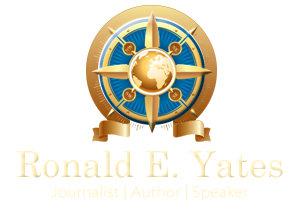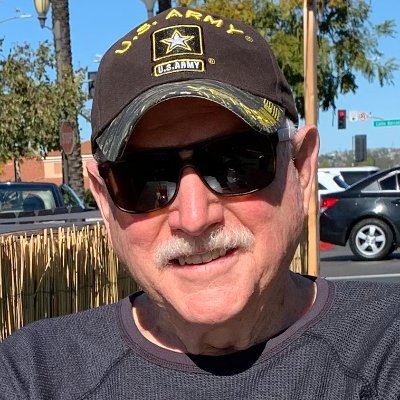PBS is currently running a new three-part documentary about Ernest Hemingway by Ken Burns and Lynn Novick which explores the famous author’s own image-making. In the documentary, we see Hemingway as a “man’s man–” a battle-hardened war veteran, a big game hunter, a deep-sea fisherman, a brawler, a boozer, a bullfighting devotee, a seducer of women.
But just how true were these carefully crafted images? Michael Katakis, the manager of Hemingway’s literary estate tells us in one episode: “I hate the myth of Hemingway. It obscures the man. And the man is much more interesting than the myth.”
Irish author Edna O’Brien explains that Hemingway’s weakness was that he loved an audience. “Newspapers and magazines would show him hunting in Africa, fishing off the Florida Keys, carousing with soldiers during the second world war, always glamorously virile,” O’Brien says in one part of the documentary. “His stories and novels—about hunting and fishing, bullfighting and battle-fighting—fused him with his characters in the public imagination.”
Despite the myth-making, there is no doubt that Hemingway restructured American literature. Literary critics often describe Hemingway’s style as one of omission, of things left out or left unsaid. His writing doesn’t leave things out, though, so much as it veils them. This is what he suggested in his iceberg theory: that stories, like icebergs, may derive their heft from things submerged or unseen.
“If a writer of prose knows enough about what he is writing about he may omit things that he knows and the reader, if the writer is writing truly enough, will have a feeling of those things as strongly as though the writer had stated them,” Hemingway once explained. “The dignity of an iceberg is due to only one-eighth of it being above water.”
I wonder how Hemingway would be tolerated or perceived if he were emerging as an author in today’s mawkish, self-indulgent world, where men and boys are being “feminized” in schools and media and where masculinity is often disparaged as “toxic” and in need of relentless reassessment.
The documentary seems intent on stripping away the myth of the man while exposing his personal struggles such as his life-long battle with depression, his insecurities, and his need for the women in his life to appease and sustain him emotionally. But try as it might, it cannot diminish Hemingway’s undeniable genius as a storyteller and his indisputable and lasting impact on literature.
That’s why a couple of years ago, I made a long-overdue pilgrimage to Key West, Florida to see where Hemingway once worked and lived. Here is a post I shared after that journey. I hope you will find it illuminating. And, by the way, if you haven’t seen the Ken Burns PBS documentary on Hemingway, I highly recommend it.
A Pilgrimage to “Papa’s” Key West Abode
The house at 907 Whitehead Street in the heart of Old Town Key West looks about the same as it did when Pulitzer and Nobel-Prize winning author Ernest Hemingway lived there from 1931 to 1940.
But that’s where the similarity ends.
The 165-year-old limestone two-story house with its wrap-around veranda and lush gardens of coconut palms, frangipani, bougainvillea, and African tulips, is now a museum offering tours at $13 a head to thousands of tourists who make the 150-mile, four-hour drive from Miami through the Florida Keys to Key West.

Tour guides lead visitors through the house’s modest rooms explaining various architectural features, furniture pieces, and artwork. They also point out the 40 six and seven-toed cats that have the run of the house and gardens.
A highlight of the tour is a peek at the upstairs room of the small two-story guest house behind the main house where Hemingway penned such classic works as Death in the Afternoon, The Green Hills of Africa, The Snows of Kilimanjaro, To Have and Have Not, The Short Happy Life of Francis Macomber, and For Whom the Bell Tolls. It was here that he also wrote dozens of short stories, poems, newspaper columns, and magazine articles.

Hemingway was a prolific writer who rose early and began writing around eight a.m. and usually finished at noon. Then it was often off to Sloppy Joe’s bar for an afternoon of drinking and gabbing with pals or heading out to sea on his fishing boat, The Pilar.
For a journalist and writer like me, visiting the place where Hemingway produced 65 percent of his work, is a bit like making a religious pilgrimage to The Vatican, Jerusalem, or Mecca.
In 1961, after his suicide in Ketchum, Idaho, the unpublished manuscript that would later become the novel Islands in the Stream was found in a vault in the property’s garage.
I have always felt a fragile connection to Ernest Hemingway because of where we both began our journalistic careers. It was at the Kansas City Star. He worked there between 1917 and 1918 cranking out police stories and other articles. I began my career there in 1968 as a summer intern from the University of Kansas’ William Allen White School of Journalism.
While working at the Star, I recall reading some of Hemingway’s clips. In those days, reporters didn’t have bylines, but a reporter who mentored me at the paper let me see Hemingway’s stories on microfiche. His stories were crisp, punchy, and filled with insightful descriptions—all elements that would eventually characterize and define his writing.
Years later Hemingway recalled how his training as a Kansas City Star reporter prepared him for a successful career as an author.
“I learned how to use short sentences and eliminate superfluous words,” he said. “These are the best rules I ever learned for the business of writing.”
As many wise young reporters do, Hemingway latched on to a seasoned newspaperman named Lionel Calhoun Moise as a mentor. Moise was probably the biggest influence in Hemingway’s journalistic career.

Moise, who was once described by a fellow Star reporter as “a big, brutal, son-of-a-bitch, who loved to drink and brawl,” believed that writers needed to experience what they wrote about. He told Hemingway to write crisply, with a minimum of description. Ultimately, Hemingway learned to let action and dialogue move the story along.
My mentor at the Kansas City Star was a 65-year-old reporter named Harry Hannon. Unlike Moise, Harry was a short, wiry man who walked with a limp. His beat, among other places, was the U.S. Federal Prison at Leavenworth, Kansas, and the Kansas State Prison just down the road in Lansing, Kansas.
Harry not only knew the wardens and many of the guards at both prisons, he knew many of the inmates—including some serving life sentences for murder and other nefarious crimes.
“You want some life experiences?” Harry asked me once as we walked through the Federal penitentiary. “You will hear plenty of those in here.”
Harry taught me things from the old Kansas City Star stylesheet like: “Say he was eager to go, not anxious to go. You are anxious about a friend who is ill;” and “He died of heart disease, not heart failure—everybody dies of heart failure;” and finally, “Don’t say, He had his leg cut off in an accident. He wouldn’t have had it done for anything.”
Hemingway would have been given the Star’s style sheet. I have attached a copy of a 1915 version at the end of this post.
Harry never made the trip to Key West to visit Hemingway’s famous abode. But a few years later, after he retired from the Star, he came to Chicago for the horse races at Arlington Park. At the time, I was a new general assignment reporter for the Chicago Tribune.

We had dinner together at the Palmer House hotel where he was staying and then I took him on a tour of the Tribune’s sprawling newsroom where reporters were pounding out stories on big Underwood typewriters for the final edition. The raucous sound of phones ringing, typewriters clacking and agitated reporters yelling “Copy!” at copyboys and copygirls, resounded throughout the vast smoke-filled room.
“Now this is a real newsroom,” Harry said as we observed the kinetic atmosphere that once upon a time defined the city room of a big city newspaper. “I envy you.”
Harry never met Hemingway at the Star. He began his career at the paper a few years after Hemingway moved on.
“I remember some reporters talking about him,” Harry told me. “They remember him as a fresh-faced kid of 18 or 19 who moved to Kansas City from Chicago. He sometimes wore a red and black checkered hunting shirt to work. A lot of folks didn’t like the way the dressed, but hell, he worked mostly out of the office on the street, covering crime, fires, chasing ambulances, riding with the cops, and hanging out in hospital emergency rooms, so who cared?”

As a general assignment reporter for the Chicago Tribune, I covered the same kinds of stories. It was the best training I ever got—my journalism courses at the University of Kansas notwithstanding.
Later Hemingway would cover war and mayhem for various newspapers and magazines, as did I for the Tribune.
Like Hemingway, I learned to write from my experiences. Unlike Hemingway, however, my fiction, while infused with many of my experiences covering wars and revolutions, does not rise to the level of virtuosity that Hemingway displayed.
Am I discouraged by that? Not at all. While Hemingway often said that writing was the hardest work he ever did, he also said telling a good story gave him the greatest joy.
Writing—whether fiction or non-fiction—is storytelling. As long as I can write for the sheer joy of it and tell a few compelling stories now and then, I will be the happiest of hacks.

